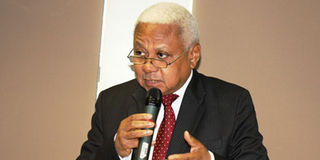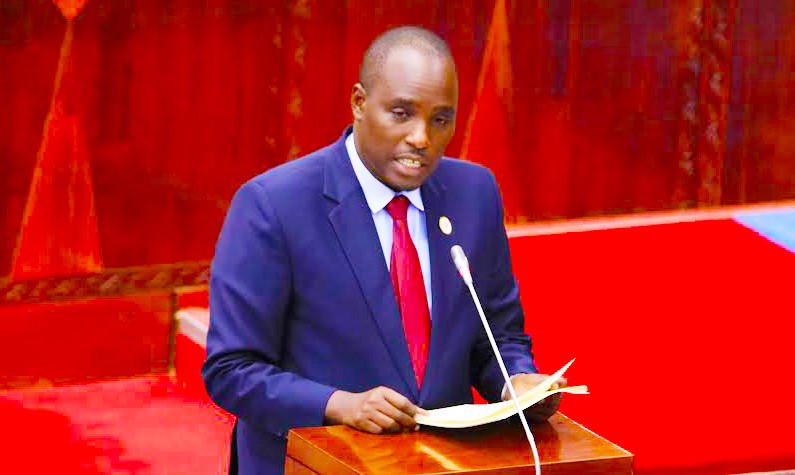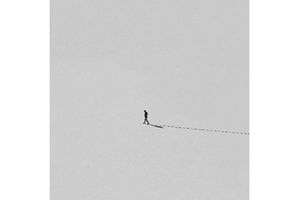CJ to lead probe into death of UN secretary-general

Chief Justice Mohammed Othman Chande. PHOTOS | FILE
What you need to know:
- “With the large commercial interests which rode on Katanga’s bid to secede from the newly independent Congo, it is unsurprising that the death of Dag Hammarskjold was regarded in some quarters as too convenient to be an accident”The Hammarskjöld Commission
Dar es Salaam. He was in a peace mission in the Democratic Republic of Congo (DRC), formerly known as Zaire, when Dag Hammarskjold who was the UN Secretary General, died in a mysterious plane crash in 1961—in what some believe was a foul play occasioned by the emerging of Cold War animosities.
Four years ago, UK author Susan Williams’ published a book titled, Who Killed Hammarskjöld?, in which she unearths a mass of new and hitherto confidential documentary and photographic evidence, proving that the death of the former UN boss was a well-planned murder.
According to Ms Williams, the official Rhodesian enquiry was a massive cover-up that suppressed and dismissed a whole array of crucial evidence, including testimonials that a smaller plane had opened fire on Hammarskjöld’s Douglas DC-6 airliner, which was not found in the thick forest until 15 hours after the accident.
But, nearly 54 years down the line, Tanzania’s Chief Justice, Mohammed Othman Chande will lead a panel of independent experts to reopen an investigation into the death of the UN Secretary General.
At Sweden’s request, the UN General Assembly adopted a resolution on December 29 calling for experts to examine all “new information” related to the diplomat’s death in southern Africa on a peace mission to the Congo.
The experts will begin their work March 30 and are to present a report to UN chief Ban Ki-moon by June 30.
Among other things, they will “review and assess the probative value of the information provided to the secretary-general by the Hammarskjold Commission as well as any relevant records or information released by member states or by other sources,” said UN deputy spokesman Farhan Haq.
Hammarskjold, the UN’s second secretary-general, died at the age of 56 when his DC-6 crashed near Ndola, in northern Rhodesia, which is today’s Zambia.
He was on his way to negotiate a ceasefire in the newly independent Congo and was to meet with Moise Tshombe, leader of Katanga Province, which had seceded from the Congo and proclaimed its independence.
In September 2013, the Hammarskjold Commission had called on the UN to reopen the investigation, saying there was “convincing evidence” that the UN chief’s plane was shot down as it prepared to land in Ndola.
Witnesses questioned by the commission spoke of the presence of another aircraft that fired on the DC-6.
The commission, which comprised jurists and diplomats, also asked the US National Security Agency to provide access to recordings it may have of conversations in the plane’s cockpit and radio messages that the crew may have made in 1961.
Until now, that material has been classified as “secret.” UN troops finally left Congo in 1964 and Tschombe won the elections of 1965.
The first elected leader, Prime Minister Patrice Lumumba, had been kidnapped, tortured and killed by a military junta earlier in the year. With the anarchic new state falling under the sway of the Soviet Union, Moise Tshombe cleaved his province and its wealth of uranium, copper and cobalt mines into a separate state supported and protected by former Belgians.
With an array of powerful interests working against any unified Congo aligned with Moscow, conspiracy theories have thrived through the 54 years since the UN chief’s death. And they have been revived and reinvigorated by a report released Monday that recommends re-opening the inconclusive 1962 UN investigation of the plane crash.
But, the question that lingers in the minds of many is whether the Judge Chande-led team will finally lay down the foundation, leading to prosecutions of all individuals who were involved in the crime.
After five decades-plus, some of the credible witnesses as well as suspects have since died, while those surviving are too old, but in the search for justice, Sweden won’t rest until the truth is fully known and justice served.
Dag Hammarskjold was posthumously awarded the 1961 Nobel Peace Prize, after doing much to raise the profile of the UN and the post of secretary general. He also led several peace missions to Beijing, the Middle East and the Congo. Under his guidance a UN Emergency Force was sent to establish peace in the Middle East after the Suez Crisis of 1956.
It has never been established whether his plane was deliberately shot down or the crash was accidental, but it is quite clear that the Chande team would soon clear one of the most controversy accidents of our time—should they established that there is enough evidence to prove that the crash was a result of foul play.
But, the 61-page report of the Hammarskjold Commission, a panel of prominent international jurists, brings to light the probable existence of “significant new evidence” that would provide conclusive proof whether the plane was shot down by a second aircraft reported by numerous witnesses to have been in the vicinity just before the crash. But the vital evidence that could confirm or finally rule out foul play—tape recordings of communications with the doomed plane and among those monitoring the diplomacy and superpower wrangling around the Congo—resides with the US National Security Agency, which continues to classify the materials as “top secret.”
According to the report published by Los Angeles Times, there were many who opposed Hammarskjold’s peace mission whereby a Congo state unified and under Marxist rule was an unwelcome development for European mining interests worried that their investments would be nationalised.
The newspaper added that Washington also didn’t relish the prospect of the Soviet Union having access to the world’s largest deposits of uranium in the midst of a nuclear arms race.
And Britain, then the colonial power in white-minority-ruled Northern Rhodesia feared the example of emancipation and majority rule on its African possession’s border.
“With the large commercial interests which rode on Katanga’s bid to secede from the newly independent Congo, it is unsurprising that the death of Dag Hammarskjold was regarded in some quarters as too convenient to be an accident,” the commission noted.
The Hammarskjold Commission and the National Security Archive, an independent documentation research centre in Washington, both submitted Freedom of Information Act requests for recordings or documents related to communications with the plane as it approached Ndola just after midnight on September 18, 1961. The researchers also sought any reference in the intelligence agency’s records to one plane firing on another on the night of the crash.
The NSA replied that it had located three documents “responsive” to the researchers’ inquiries but that two were still under seal despite the agency’s policy of declassifying records after 50 years. Those two have been barred from release by an Obama administration executive order, as their disclosure “could reasonably be expected to cause exceptionally grave damage to the national security,” Mr John Prados, the senior fellow at the archive who handled the FOIA queries, said of the response he got from the NSA.
The third document “originated with another government agency” to which it has been referred, said archive researcher Mary Curry, reading from the NSA’s August 20 reply. But the NSA didn’t identify the agency, and no other response to the FOIA requests has been received by the commission or the archive, Curry said.
Additional reporting by Athuman Mtulya




